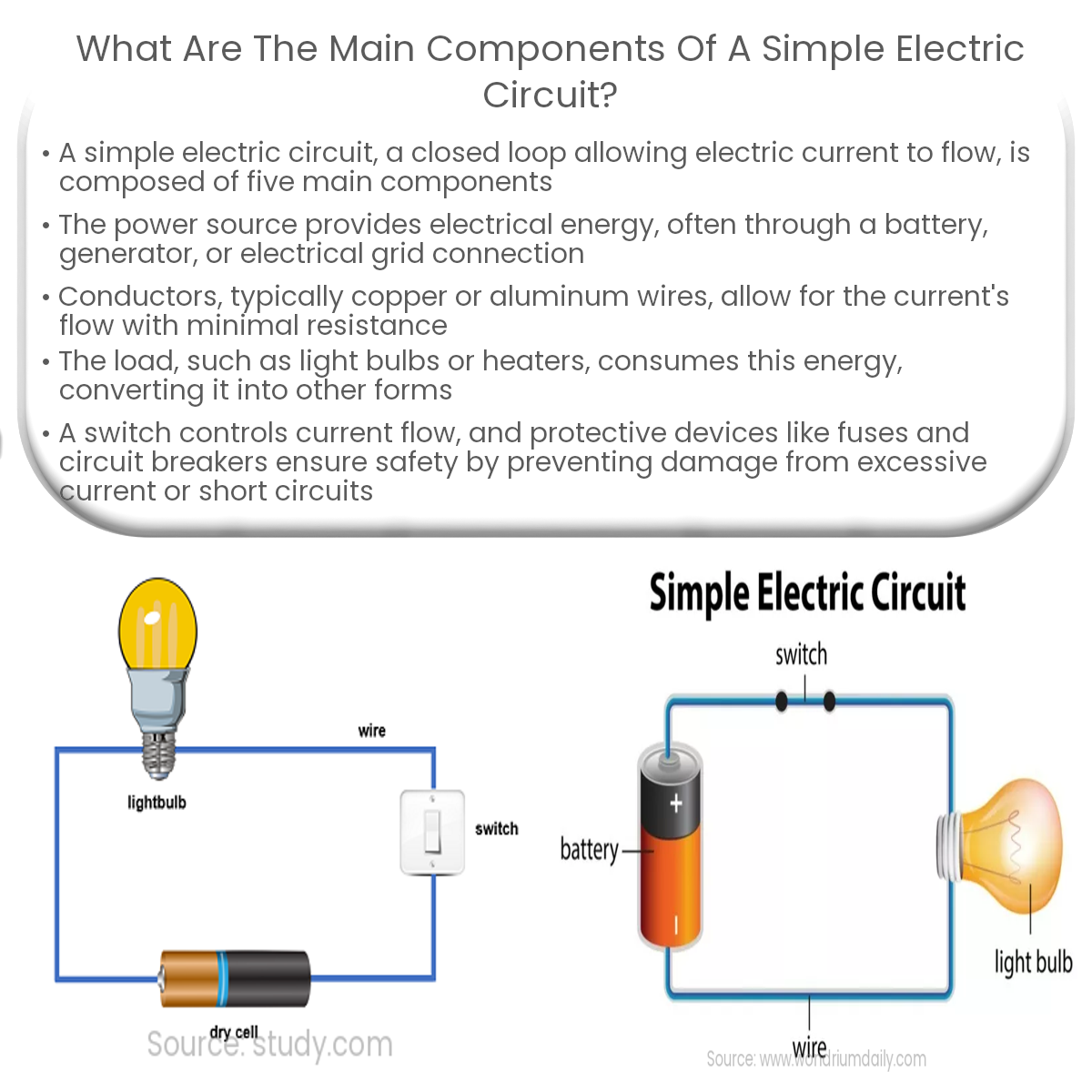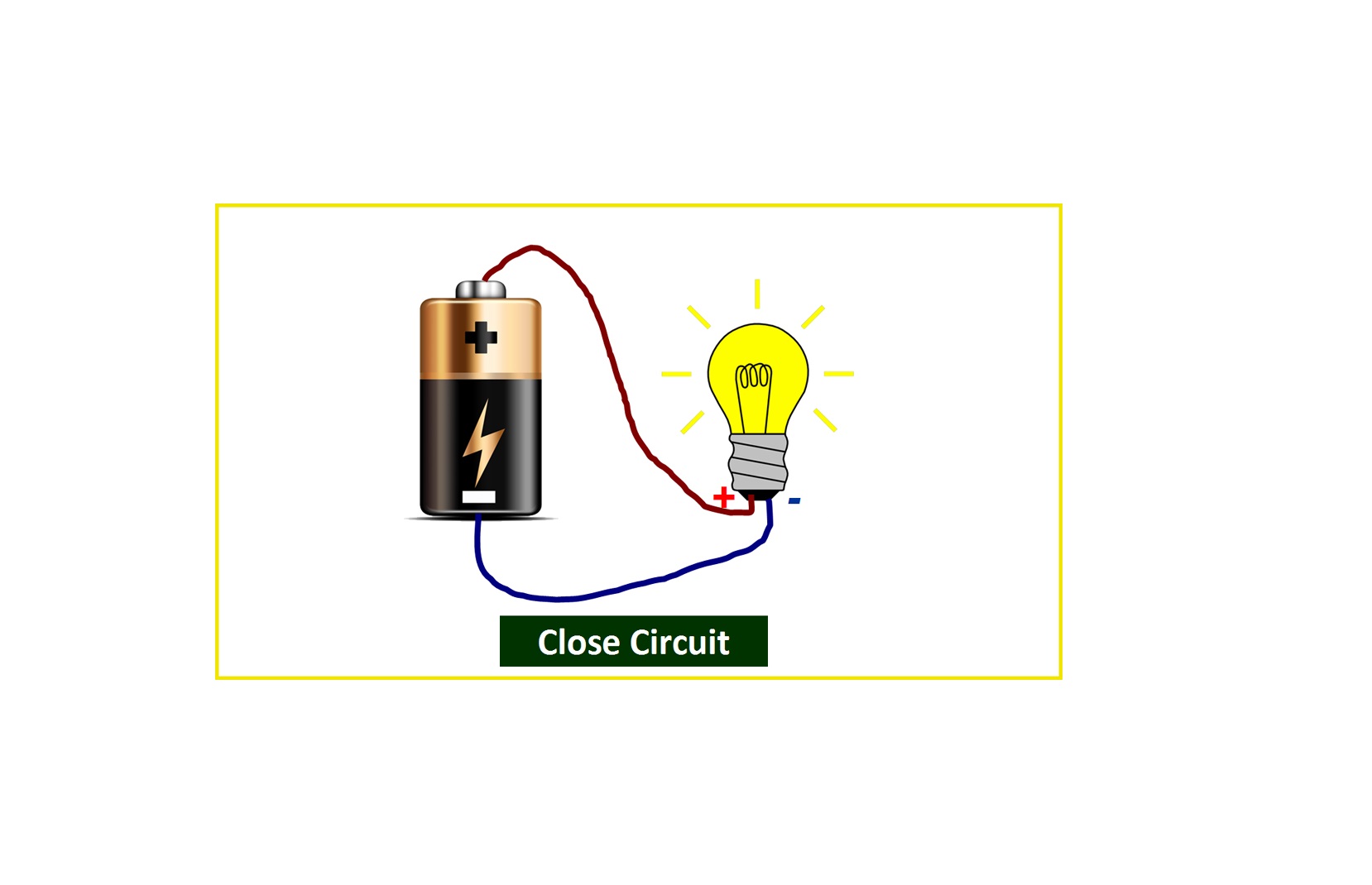Fabulous Info About Why Do Circuits Need To Be Closed

How To Make A Closed Circuit With Switch Wiring Work
The Curious Case of the Open Circuit
1. Understanding the Basics
Ever wonder why your toaster won't toast or your lamp refuses to light up? Chances are, the reason isn't some elaborate conspiracy involving disgruntled appliances (though, let's be honest, sometimes it feels that way). More likely, the culprit is an open circuit. Think of an electrical circuit like a pathway for tiny little electrons, the VIPs of electricity. They're eager to get from point A (the power source) to point B (your device) and do some work along the way, like heating up the toaster coils or illuminating a bulb.
But these electrons are a picky bunch. They need a complete, unbroken path to travel. Imagine trying to run a marathon with a giant chasm in the middle of the course. Not happening, right? That's what an open circuit is like for electrons — a massive, impassable gap. Without a continuous loop, the flow of electricity stops dead in its tracks.
So, why is this closed-loop requirement so crucial? Well, it's all about creating a consistent flow. A closed circuit ensures that the electrons have a return route to the power source, completing the circuit. This continuous flow is what allows electrical devices to function. Without it, we're left with useless gadgets and a lot of head-scratching.
Consider a simple flashlight. You've got a battery, a bulb, and a switch. When the switch is on, it creates a closed circuit, allowing electricity to flow from the battery, through the bulb (making it light up), and back to the battery. Flip the switch off, and you've opened the circuit. The path is broken, the electrons can't complete their journey, and the light goes out. Simple, yet fundamental!

Premium Vector Open Circuit And Closed Experiment
Breaking Down the "Closed" Requirement
2. Delving Deeper into Circuit Anatomy
While "closed loop" is a good starting point, there's a bit more to it. It's not just about having a continuous path; it's also about having a path with acceptable resistance. Think of resistance like friction. Too much friction (high resistance) and it becomes difficult for the electrons to move efficiently. A completely open circuit has infinite resistance, hence no flow.
In a closed circuit, components like resistors are intentionally placed to control the amount of current flowing. They provide a predictable amount of resistance, allowing the circuit to function as intended without overloading anything. It's like a carefully calibrated water pipe system, ensuring just the right amount of water flows to each outlet.
Furthermore, the quality of the connections matters. Loose or corroded connections can introduce unwanted resistance, hindering the flow of electricity. This is why it's important to ensure that all wires are securely connected and free from corrosion. A seemingly minor issue like a slightly loose wire can disrupt the entire circuit's performance.
Therefore, when we say a circuit needs to be closed, we really mean it needs to be a complete, low-resistance path that allows for a controlled and consistent flow of electricity. It's a delicate balance that engineers carefully design to ensure our devices work reliably and safely.

Closed Electric Circuit
What Happens When Circuits Aren't Closed? A Comedy of Errors (and Potential Hazards)
3. The Consequences of Circuit Disruption
So, what's the big deal if a circuit isn't closed? Well, besides your appliances refusing to cooperate, several other (potentially more serious) issues can arise. For starters, you simply won't get the desired functionality. Your TV screen will remain stubbornly dark, your coffee maker will stay stubbornly cold, and your phone will remain stubbornly uncharged.
But more concerningly, open circuits can lead to safety hazards. For example, if a wire breaks inside a wall, it creates an open circuit. While the appliance connected to that circuit won't work, the exposed wire can still pose a risk of electric shock if touched. This is especially true if the circuit breaker doesn't trip, which is why properly functioning circuit breakers are vital.
In some cases, an open circuit can even lead to overheating. If a partial connection exists, it can create a point of high resistance. This resistance generates heat, which can potentially ignite nearby materials, leading to a fire. That's why it's crucial to address any electrical issues promptly and to use appropriately rated wires and components.
Moreover, intermittent open circuits can be particularly frustrating. Imagine your lights flickering on and off randomly. This could be due to a loose connection that opens and closes sporadically. These intermittent issues are often difficult to diagnose but can be indicative of a more significant problem lurking beneath the surface.

Open, Closed, Series And Parallel Circuits.Battery, Light Bulb
Finding and Fixing the Breaks
4. Becoming Your Own Electrical Detective
Okay, so you suspect you have an open circuit. What do you do? Don't panic! With a little knowledge and some basic tools, you can often diagnose and even fix the problem yourself (but always prioritize safety and consult a qualified electrician if you're unsure!).
The first step is to visually inspect the circuit. Look for any obvious signs of damage, such as broken wires, loose connections, or burnt components. Pay particular attention to areas where wires connect to terminals or where there are splices in the wiring. A multimeter is your best friend here. It can measure voltage, current, and resistance, allowing you to pinpoint the location of the open circuit.
When troubleshooting, start by checking the power source. Is the battery dead? Is the circuit breaker tripped? Once you've ruled out the obvious, move on to examining the wiring. Use the multimeter to check for continuity — a complete, unbroken path — between different points in the circuit. If you find a point where continuity is broken, that's likely where the open circuit is located.
Remember to always disconnect the power before working on any electrical circuit. Safety should always be your top priority. If you're not comfortable working with electricity, it's best to call a qualified electrician. They have the expertise and equipment to safely diagnose and repair any electrical problems.

PPT ELECTRICITY UNIT Review PowerPoint Presentation, Free Download
The Closed Circuit
5. Why Understanding Circuits is Important
The principle of the closed circuit is more than just a technicality; it's a fundamental concept that underpins all of electrical engineering. From the simplest flashlight to the most complex computer, every electrical device relies on the reliable and consistent flow of electricity provided by closed circuits.
Understanding this principle allows us to design, build, and troubleshoot electrical systems effectively. It helps us to appreciate the importance of proper wiring, secure connections, and well-maintained components. Without a solid grasp of closed circuits, we'd be lost in a world of malfunctioning gadgets and unpredictable electrical behavior.
Moreover, understanding closed circuits promotes safety. By knowing how electricity flows and what can disrupt that flow, we can take steps to prevent electrical hazards and protect ourselves from harm. It empowers us to make informed decisions about electrical safety in our homes and workplaces.
So, the next time you flip a switch and your lights come on, take a moment to appreciate the humble closed circuit. It's a silent workhorse that powers our modern world, enabling us to enjoy the conveniences and technologies that we often take for granted.

Simple Closed Circuit Diagram
FAQ
6. Everything You Wanted to Know About Closed Circuits (But Were Afraid to Ask)
Q: What happens if I accidentally create a short circuit?
A: A short circuit is like the opposite of an open circuit — an unintended path of very low resistance. This causes a massive surge of current, which can damage components, trip circuit breakers, and even start fires. It's definitely something to avoid!Q: Can I use any type of wire for any circuit?
A: Absolutely not! The type and gauge (thickness) of the wire must be appropriate for the amount of current the circuit will carry. Using undersized wire can cause overheating and potentially lead to a fire. Always consult electrical codes and guidelines to ensure you're using the correct wire.Q: Is it possible to have a circuit that's partially open?
A: Yes, this is often the case with intermittent faults. A partially open circuit might have a high resistance connection, causing dim lights, malfunctioning appliances, or erratic behavior. These are tricky to diagnose, but often indicate a loose or corroded connection.